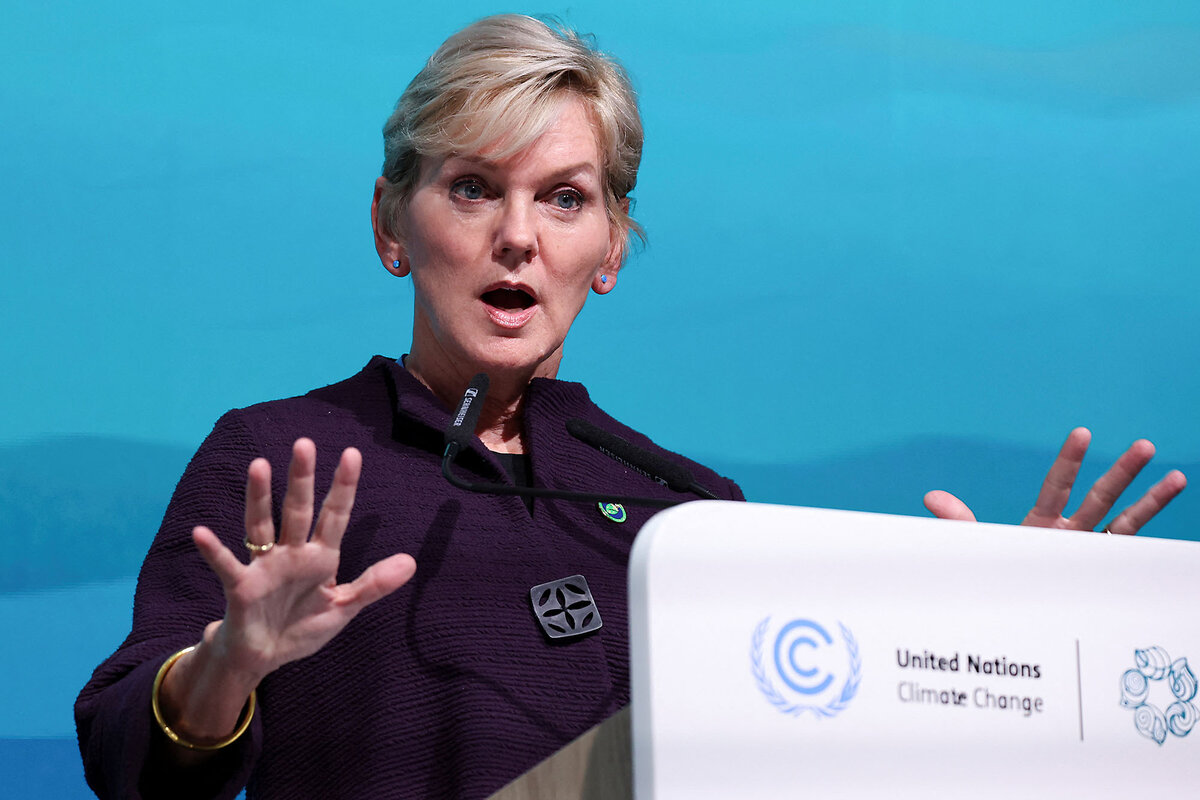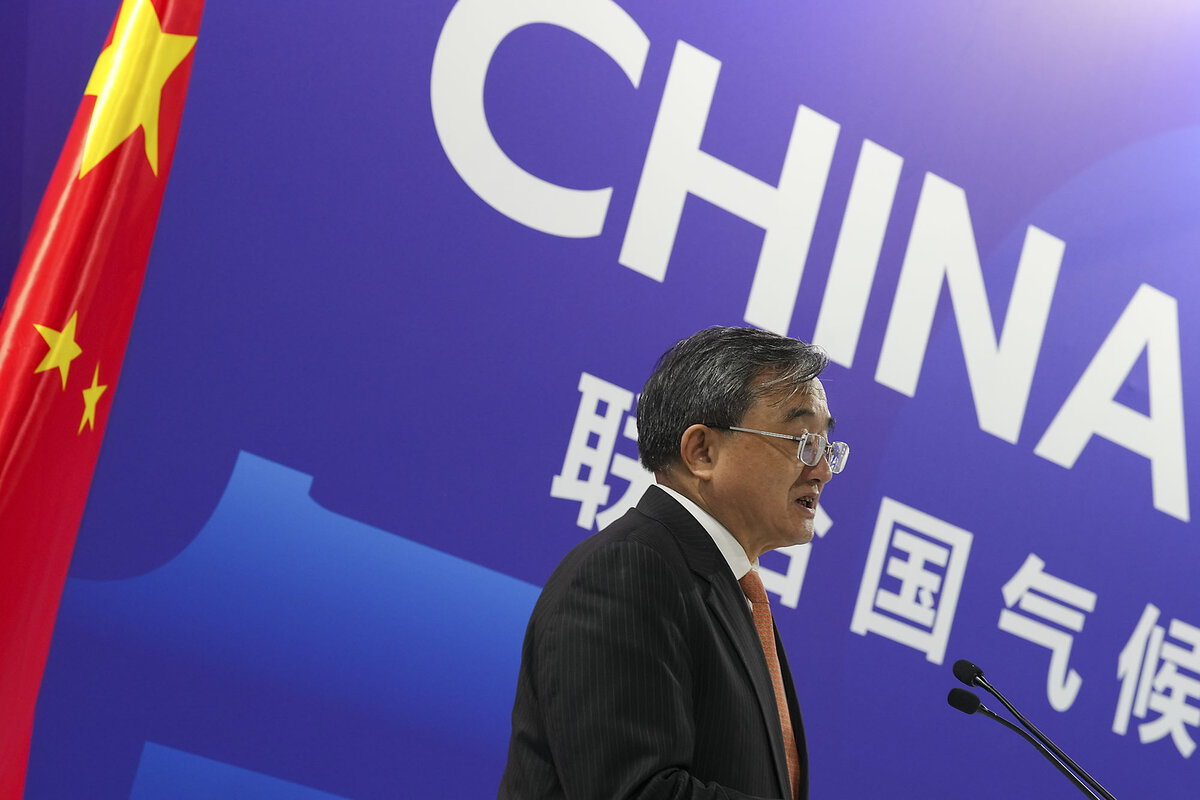It’s more than money dividing nations at UN climate change conference
Loading...
| London
The conference held this week in Baku, the capital of Azerbaijan, has been the very definition of international diplomacy. Delegates from nearly 200 countries have been addressing the perils of climate change and trying to find the huge sums of money needed to slow, and cope with, its damaging effects across the planet.
Yet even as COP29, the annual United Nations climate conference, sought to produce a new, multi-trillion-dollar “climate finance” plan, there were growing signs of an even greater challenge – to the very idea of shared global climate action embodied in the Paris Agreement of 2015.
It might be called “climate nationalism.”
Why We Wrote This
A story focused onDelegates to the COP29 climate conference in Azerbaijan are finding it difficult to agree on how much money poor countries need to deal with climate change. That’s partly because some leading countries appear not to believe any longer in shared global climate action.
A number of key countries – including China, the United States, and India, the main sources of the carbon dioxide fueling global warming – seem increasingly set on charting their own course.
America and China, the world’s largest economies and major political powers, are central to any workable international climate agreement. While their rivalry has intensified in recent years, they were both key to making the landmark Paris accord possible.
The question now is whether the post-Paris fabric of international climate cooperation is still resilient enough to forestall the irreversible symptoms of an overheating planet.
That has become increasingly urgent amid expert warnings that the fight against climate change is at a crossroads moment, as the scale of global warming intensifies.
The answer is not encouraging in the short term.
But for a variety of economic and geopolitical reasons, the outlook is not necessarily so bleak further into the future.
The main short-term challenge is likely to be U.S. President-elect Donald Trump’s return to the White House.
During his first term, he withdrew the United States from the Paris Agreement, and a spokesman during his election campaign said he would do so again. He has also vowed to expand U.S. oil production, already at a record high, telling campaign rallies he would “drill, baby, drill!”
An early, real-world test of what Trump 2.0 will mean could be the next administration’s response to the climate-finance framework that delegates have been trying to thrash out in Baku.
Even with energetic U.S. and Chinese engagement – and neither government sent top-level delegations to COP29 – reaching an agreement that stands a chance of implementation was always going to be difficult.
The aim? To secure enough money for less developed economies, and those already vulnerable to the effects of rising sea levels, extreme storms, rainfall, and droughts, to cope with these effects and develop their own economies on a low-carbon footing.
At an early COP meeting in 2009, the United States, European countries, and other developed economies undertook to provide an annual sum of at least $100 billion by 2020 – a benchmark they finally met only in 2022.
And now the amounts required are enormously higher. The United Nations has said around $1.3 trillion a year is needed, a figure it predicts will rise to between $6.3 trillion and $6.7 trillion by 2030.
That has led to fraught discussions in Azerbaijan over how the target might be met, in a mixture of grants, private investment, and contributions from international financial institutions.
The debate has also revived longstanding frustrations among developed countries over the criteria governing the way economies are classified, which defines economic heavyweights such as India, the Gulf oil states and, above all, China, as still part of the developing world, and thus not required to contribute to the central climate funds.
Even if the Azerbaijan conference does agree on a draft for a new, much larger climate-finance fund, it is hard to see how it will get buy-in from Chinese leader Xi Jinping and Mr. Trump – which would be essential – anytime soon.
Still, the longer-term outlook may prove less discouraging.
One reason is that more and more governments and major businesses are shifting towards investments in green projects. For instance, top executives in U.S. oil and natural gas companies have been urging Mr. Trump to remain in the Paris process.
More importantly, China has begun huge-scale investment in greener energy and technology, with the clear intention of becoming the leading player in a post-carbon world economy. Beijing now generates nearly half its energy from renewables, which have overtaken coal.
Another sign of the economic retooling is electric cars. Last year, 60% of the world’s new electric vehicles were registered in China. Exports of those vehicles threaten to undermine Western car-makers’ share of their own markets.
So climate nationalism might provide a longer-term boost to the world’s move away from fossil fuels.
President-elect Donald Trump’s foreign policy North Star has been “get tough on China.” He has vowed to place new and higher tariffs on Chinese imports, electric cars presumably among them.
And while he has signaled his opposition to President Joe Biden’s “green new deal” infrastructure investments, he may prove reluctant to undo a program that has disproportionately benefited Republican-led areas of the country.
On top of that, if Beijing plans to make itself the world’s leading nation by dominating a greener world economy, perhaps Mr. Trump may be tempted to challenge China’s ambitions in that field.
Might he want to put “America First” in a green future as well?










